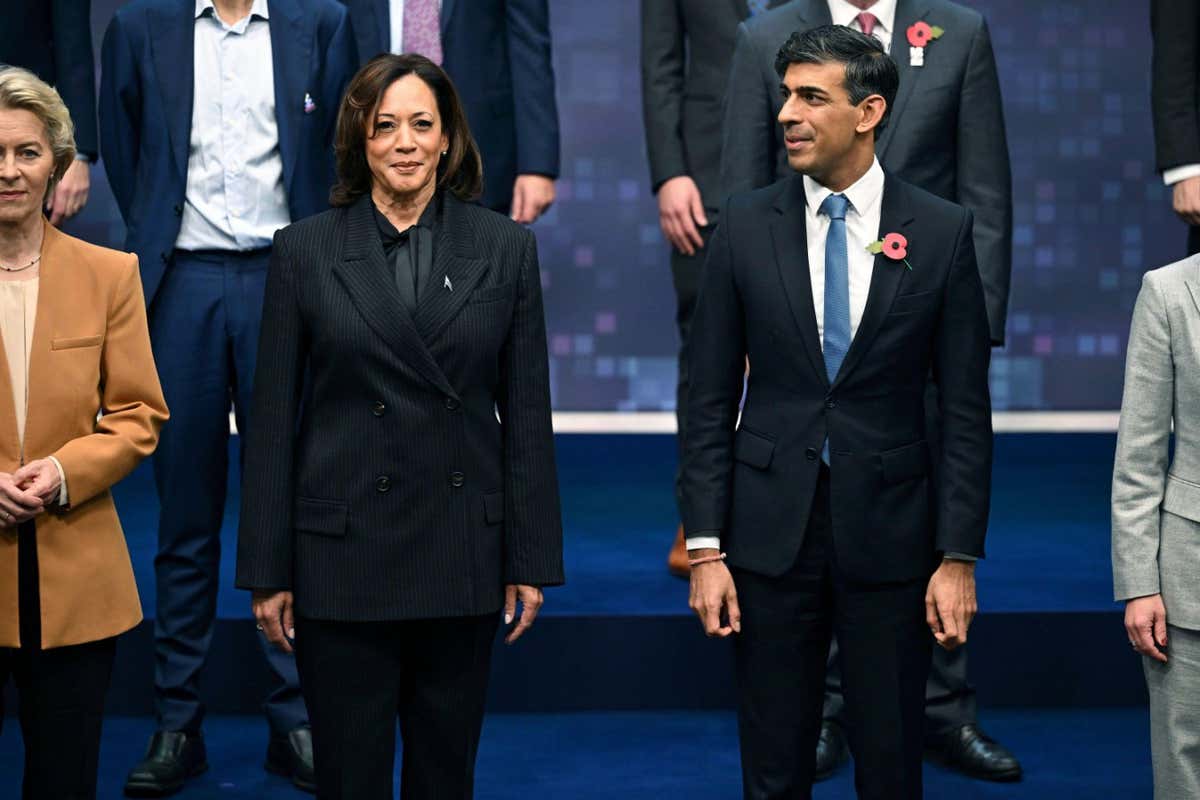[ad_1]

US vice president Kamala Harris and UK prime minister Rishi Sunak at the AI Safety Summit at Bletchley Park on 2 November
Associated Press/Alamy
In the weeks leading up to the UK’s AI Safety Summit, held on 1 and 2 November, prime minister Rishi Sunak repeatedly stressed the potential risks that artificial intelligence could pose to society. Then, on the second morning of the event, he told reporters that people must avoid “alarmist” claims – just before warning that AI could be as dangerous as nuclear war. It is safe to say there were mixed messages.
But the summit was, of course, intended to disperse this fog of confusion: to examine the risks of AI, provide space for representatives of nations around the world to talk with business leaders and technology experts, and ultimately plan for a future that avoids disastrous pitfalls. Was that achieved?
The main takeaway was the new Bletchley Declaration, signed by 28 nations, including China and the US, and the European Union. Getting any sort of international consensus in these tense political times is a success, but the document does little more than acknowledge that there are risks and pledge to explore them. The only concrete action promised in the wording is to hold more summits in the future. Perhaps this meeting could have been a ChatGPT-generated email, and saved the carbon expenditure of jetting everyone in.
Carissa Véliz at the University of Oxford, a leading AI ethicist who wasn’t invited to the meeting, is unimpressed by a summit that promises more summits. “We’ve already been slow to regulate AI and reach international agreements on it. Having another meeting in future doesn’t seem ambitious enough, given the high stakes and the rapid development and implementation of AI,” she told New Scientist.
It is worth remembering that it is only a year since OpenAI launched ChatGPT and just eight months since it saw an upgrade to the more powerful GPT-4 model. Who knows what version number we will be on by the time leaders meet again?
Gary Marcus at the Center for the Advancement of Trustworthy AI says the Bletchley Declaration is welcome, but doesn’t go far enough and doesn’t represent a broad enough cross-section of society. “We urgently need to move past position statements – there have been a lot of those in recent months – and into concrete proposals about what to do next.”
Marcus believes that the executive order on AI by US president Joe Biden, released the same week as the Bletchley summit, comes far closer to laying out real policy. It orders a wide array of US government agencies to develop guidelines for testing and using AI systems. The EU, too, is working on AI legislation. There seems to be no lack of will to regulate AI, but as yet an almost total absence of detail.
Clark Barrett at Stanford University in California says that much of the Bletchley Declaration is “predictably vague and thus runs the risk of being words with no actions attached”. But its talk of “building a shared scientific and evidence-based understanding of these risks” is a sensible way forward, if followed through.
The reality is that technology – just as it has always done – is outpacing legislation. And if the world’s law-makers at least got up to speed on the latest developments in AI at Bletchley Park this week, it is hard to imagine they won’t need a refresher course by the time they meet again, with the face of AI having transformed once more. While summits might offer photo opportunities and the chance for politicians to rub shoulders with the likes of Elon Musk, no amount of gatherings can solve the problem of innovation outpacing legislation.
Topics:
[ad_2]
Source link




